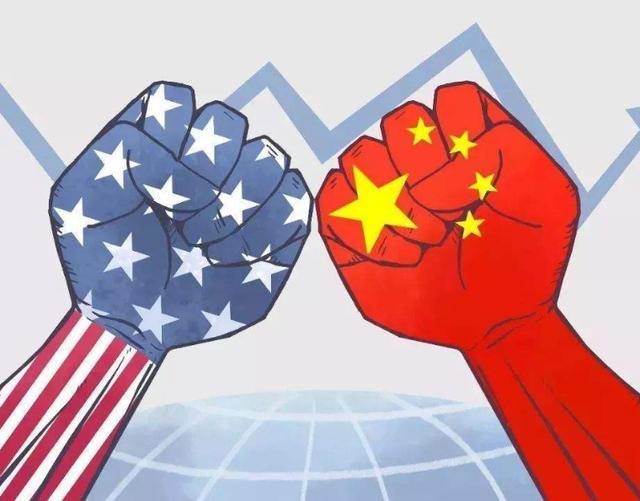China's Export Dependence: Vulnerability To Tariff Hikes

Table of Contents
The Magnitude of China's Export Dependence
China's export sector plays a colossal role in its GDP. For decades, exports have been a primary engine of economic growth, contributing a substantial percentage to the nation's overall economic output. While the precise percentage fluctuates yearly, it consistently remains a significant figure, highlighting the country's reliance on international trade. This dependence is further emphasized by the consistent growth of exports over the past few decades, showcasing a trajectory deeply intertwined with global market dynamics.
Key export sectors driving this dependence include electronics, textiles, machinery, and numerous other manufactured goods. China has established itself as a global manufacturing powerhouse, dominating supply chains for countless products.
- Quantifying China's Export Dominance: China holds a substantial share of global exports in numerous sectors, often leading the world in specific product categories.
- Key Export Markets: The United States and the European Union have historically been crucial export markets for China, making it particularly vulnerable to trade disputes originating from these regions.
- Export Performance & Economic Growth: A strong correlation exists between China's export performance and its overall economic growth. Any significant downturn in exports directly impacts the nation's GDP and economic stability.
The Impact of Tariff Hikes on Chinese Exports
Tariffs levied on Chinese goods by other countries directly increase the price of these goods in foreign markets. This price increase reduces the competitiveness of Chinese products, leading to a decrease in demand and a potential loss of market share to competitors from other nations. The impact varies across different export sectors, with some being more vulnerable than others. Labor-intensive industries, for example, may face steeper challenges than those leveraging higher technology.
- Past Examples: Previous instances of tariff increases, such as those imposed during the US-China trade war, have demonstrated the tangible negative consequences for Chinese exports.
- Retaliatory Tariffs: The imposition of tariffs can trigger retaliatory measures from China, escalating trade disputes and creating a cascading effect on global trade. This can lead to a disruption of supply chains and negatively impact businesses worldwide.
- Impact on Businesses and Employment: Tariff hikes directly impact Chinese businesses, potentially leading to decreased profits, reduced production, and even job losses, particularly in export-oriented industries.
Case Study: The US-China Trade War
The US-China trade war provided a stark illustration of the vulnerability of China's export-dependent economy. Tariffs imposed by the US significantly impacted various sectors, leading to reduced exports and economic disruption. For instance, the agricultural sector experienced a substantial decline in exports to the US market.
- Specific Industry Impacts: Industries heavily reliant on US markets, such as electronics and textiles, suffered disproportionately. This highlighted the risks associated with over-reliance on a single major export market.
- China's Response: China responded with its own tariffs and attempted to stimulate domestic consumption to reduce reliance on exports. However, the effectiveness of these measures remains a subject of ongoing debate.
- Long-Term Implications: The trade war had long-term implications, including the reshaping of global supply chains and a heightened awareness of the risks associated with export dependence.
Strategies for Mitigating Export Dependence
To lessen its vulnerability, China needs a multi-pronged approach to mitigate its export dependence. This requires a strategic shift towards diversifying export markets, reducing over-reliance on any single major trading partner. Simultaneously, China must focus on boosting domestic consumption to reduce its reliance on external demand.
- Export Market Diversification: Actively cultivating new export markets in Africa, Latin America, and other regions can help reduce the impact of potential trade disputes with established markets.
- Stimulating Domestic Demand: Government policies aimed at increasing domestic consumption, such as improvements in social welfare and infrastructure, can significantly reduce reliance on exports for economic growth.
- Technological Innovation: Investing heavily in research and development across various sectors can enhance the competitiveness of Chinese products and reduce reliance on lower-value-added manufacturing.
The Future of China's Export Sector
The future of China's export sector is intertwined with global economic uncertainty and geopolitical risks. Ongoing trade disputes, the rise of new economic powers, and technological advancements will continue to shape the landscape. China's ability to adapt and diversify its economic strategy will be crucial for future success.
- Future Trade Disputes: Potential trade disputes with other nations could continue to pose a challenge to China's export sector.
- Rise of New Economic Powers: The rise of other economic powers, particularly in Asia, will increase competition in global markets.
- Long-Term Outlook: China's long-term economic stability will hinge on its ability to successfully diversify its economy and reduce its dependence on exports.
Conclusion:
China's significant reliance on exports makes it highly vulnerable to fluctuations in global trade and, specifically, tariff hikes. The US-China trade war served as a stark reminder of this vulnerability. To mitigate this risk, China needs to prioritize diversifying its export markets, fostering robust domestic demand, and continuously investing in technological innovation. Ignoring the challenges posed by export dependence could have serious long-term consequences for China's economic stability. Understanding and addressing China's export dependence is crucial for navigating the complexities of the global trade landscape and ensuring sustainable economic growth. Further research into China's export dependence and the effectiveness of mitigation strategies is essential for policymakers and businesses alike.

Featured Posts
-
 Strained U S China Ties Analyzing The Risk Of A New Cold War
Apr 22, 2025
Strained U S China Ties Analyzing The Risk Of A New Cold War
Apr 22, 2025 -
 Ftc To Appeal Microsoft Activision Merger Ruling
Apr 22, 2025
Ftc To Appeal Microsoft Activision Merger Ruling
Apr 22, 2025 -
 Bmw Porsche And The Complexities Of The Chinese Automotive Market
Apr 22, 2025
Bmw Porsche And The Complexities Of The Chinese Automotive Market
Apr 22, 2025 -
 Technical Glitch Forces Blue Origin To Postpone Rocket Launch
Apr 22, 2025
Technical Glitch Forces Blue Origin To Postpone Rocket Launch
Apr 22, 2025 -
 E Bay Listings For Banned Chemicals Section 230 Protection Challenged
Apr 22, 2025
E Bay Listings For Banned Chemicals Section 230 Protection Challenged
Apr 22, 2025
